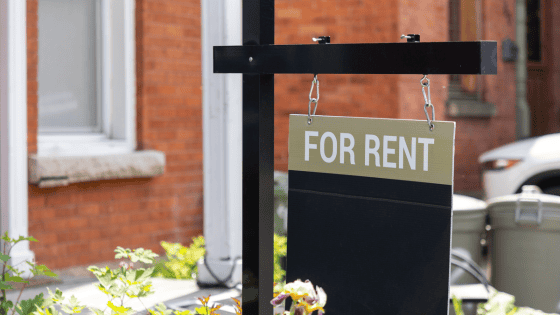by Andrew Sivertsen, CFP® CeFT®

Six months ago, I wrote an article about how to manage volatility risk (the swings up and down in the markets) with an investment portfolio. You can read the full article here. Some flying analogies helped describe how to build an appropriate portfolio for your specific situation and how to adjust the portfolio over time due to the market fluctuations. It almost seems humorous now to think about flying since I have not flown since before that article was written and like most of you, I do not have any travel plans through year-end and possibly well into next year. That article feels like a lifetime ago as so much of our world has changed. I never would have imagined that things like remote learning for my kids, wearing masks in public, and virtual meetings would feel normal. Of course, I will still be excited when the day comes that these actions will be more memories than life. I was curious to revisit this article and see just how these principles played out this year.
2020 Stock Market Recap
Here is the brief recap of the wild ride of 2020. On February 20th, 2020, the S&P 500 closed at record high topping off a nearly 11-year bull market. Markets began to trend down the following week with the main headline being the oil war between Russia and OPEC, but March 9th it was ultimately the COVID-19 pandemic that drove the swiftest market crash in history with two of the biggest single down days since Black Monday in 1987. Markets bottomed out on March 23rd and began to rally with the hope of vaccines and economic recovery. On August 18th, 2020, the S&P 500 index hit a new high, officially ending the shortest bear market in history. As a side note, the S&P 500 is a measure of the performance of the 500 largest companies in the US. This is only a small subset of the total stock market worldwide. Many stocks including some in the S&P 500, smaller US companies, and international companies are still recovering. These are important investments for a well-diversified portfolio. Several market forecasts indicate that these stocks may need part of 2021 before fully recovering.
Long-Term Volatility
Building a portfolio to manage long term volatility is a very individualized process based on each person’s experience since it needs to be appropriate based on your age, goals, and risk tolerance. With the age-old adage of investing being buy low and sell high, in general, here are some themes that we saw. Accumulators who typically have a higher allocation to stock markets were able to ignore the fluctuation on their total balance and take the opportunity to invest new money into some of the lowest stock prices seen in over four years. Those who were taking regular withdrawals from their portfolio mostly had a portfolio with a more balanced mixture of both stocks and bonds. Their experience fell into two camps. The first were those with large cash reserves that were able to stop pulling money off their portfolio. This allowed more funds to be re-invested into the low stock prices through our opportunistic rebalancing, which we will review shortly. The second camp were those that needed to continue their distributions. For distributions in March/April, due to the contractions in the markets, a large percentage of the distributions were filled by selling the more stable bond investments thus limiting selling stocks while the prices were low. All three scenarios were able to effectively navigate the market volatility by having a portfolio constructed for their age and goals. If your goals have changed you should consult your advisor about possible adjustments to the portfolio. The last piece is making sure the portfolio is appropriate based on your risk tolerance. This is important to prevent panic selling during a down market. If you strongly considered selling out of markets during the March/April stretch, it may be time to review your risk tolerance with your financial planner.
Short-Term Volatility
As described in the winter article, one of the best ways to manage short term fluctuations in the market is through opportunistic rebalancing. This means that when stocks grow, they become a bigger percentage of the portfolio and periodically those gains should be sold and tucked into the safer assets of the portfolio. Likewise, when stocks go down it could be time to sell some of the safer assets and invest in the markets. Research studies show that opportunistic rebalancing can add additional performance over the long-term. During a year like 2019, when markets had modest gains, there was not a lot of rebalancing in portfolios. However, it is years like 2020 when opportunistic rebalancing can really make a difference. Again, this is a very individualized process for each account based on several factors such as the risk level on the portfolio and the size/timing/frequency of contributions and distributions. In general, we saw several themes. With markets hitting all-time highs early in the year, we generally rebalanced out of the stock markets from December through February, protecting some gains from the big drops in late February and March. During the drops we made several large purchases into the stock markets. This summer as markets rebounded, we once again started selling stocks and trimming off the gains. We will continue to monitor accounts regularly as volatility is expected to remain heightened for some time.
Intermediate-Term Volatility
Markets experience broad market swings up and down as they go through bull/bear cycles. For accounts that have not opted out of our market pricing adjustments, the investment policies allow the models to shift more defensive when ratios indicate that markets are expensive and shift more aggressive when they are less expensive. Prior to the March drops, these accounts were positioned more conservatively, protecting more capital from the drop. In mid-March we triggered a shift to move 5% of that defensive position into equities. Between the rebalancing and market pricing adjustment we are seeing improvements compared to a static portfolio of the same funds (buy and hold strategy).
Watching the Grass Grow
It has been encouraging over the last six months to watch the systems and tools that The Planning Center has put in place work as intended, even during a pandemic where most of our team was forced to work from home. Since I have not flown for some time, I have had a lot more time at home to be with family and realized that prudent investing should be like watching the grass grow. Most of the time it should not be all that exciting, we water and fertilize appropriately and have tools to handle it, but we also need to be prepared for when draughts or other problems occur. The good news is that the grass is still growing.
Andrew Sivertsen, CFP®, is a Sr. Financial Planner in the Quad Cities office of The Planning Center, a fee-only financial planning and wealth management firm. Email him at: andrew@theplanningcenter.com.






